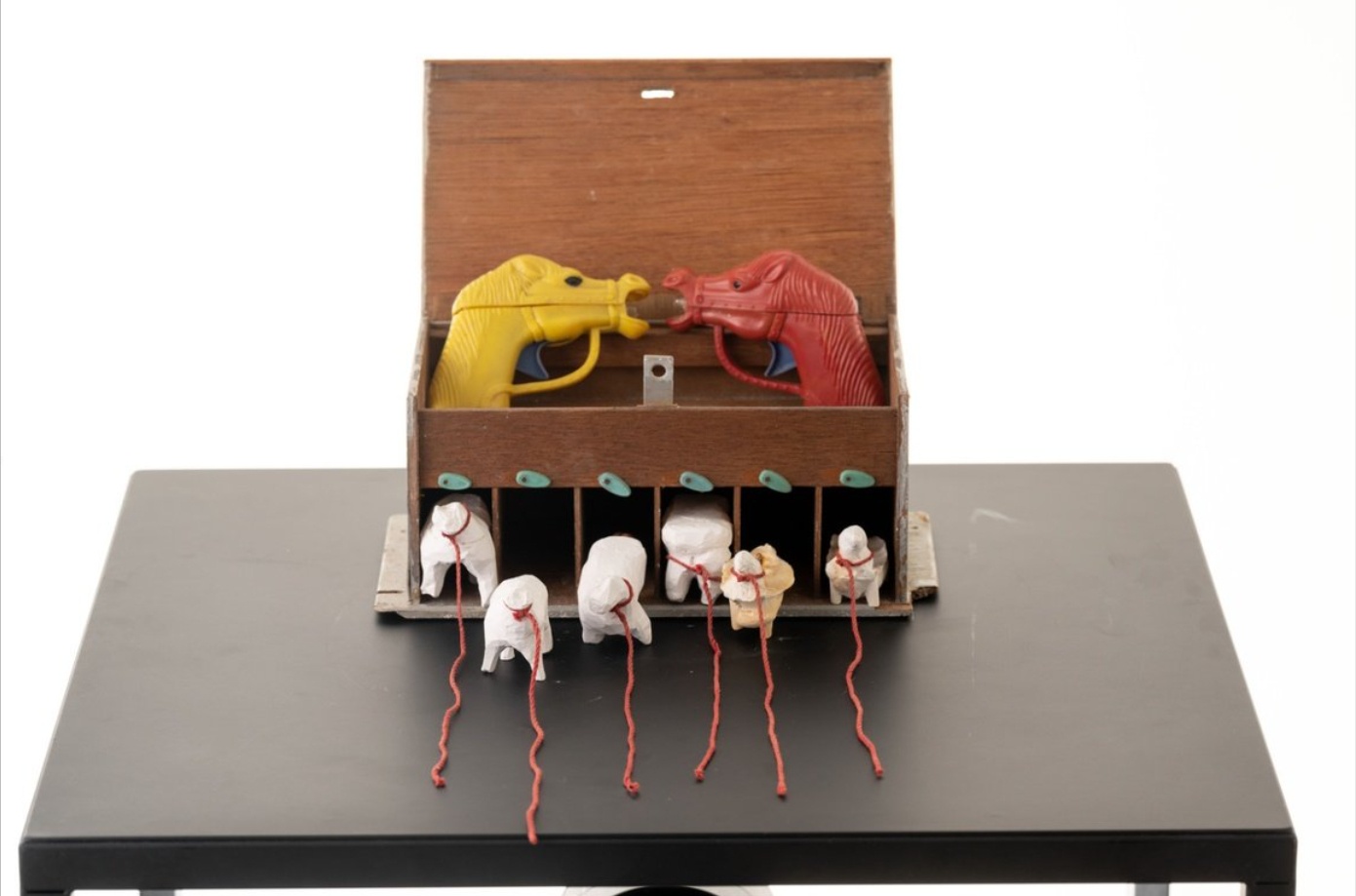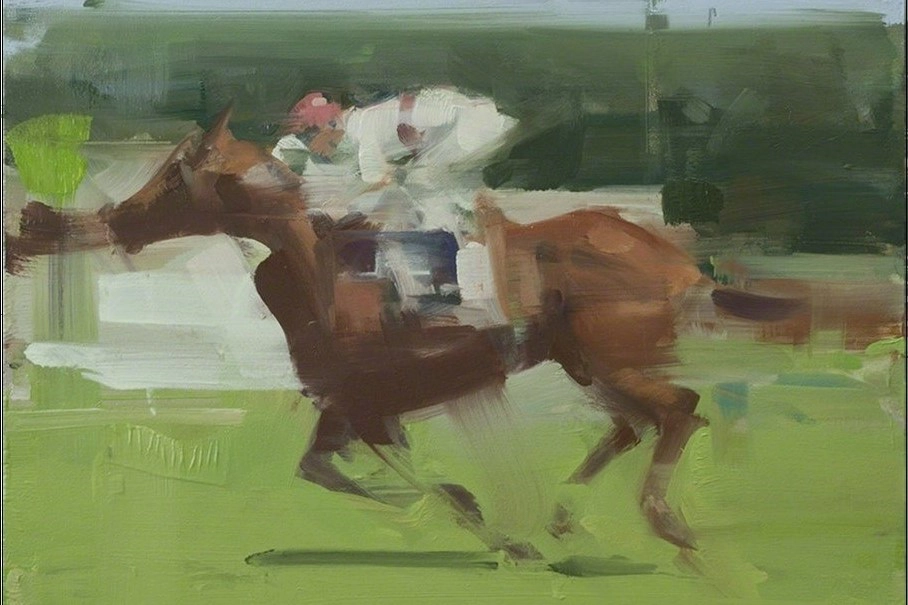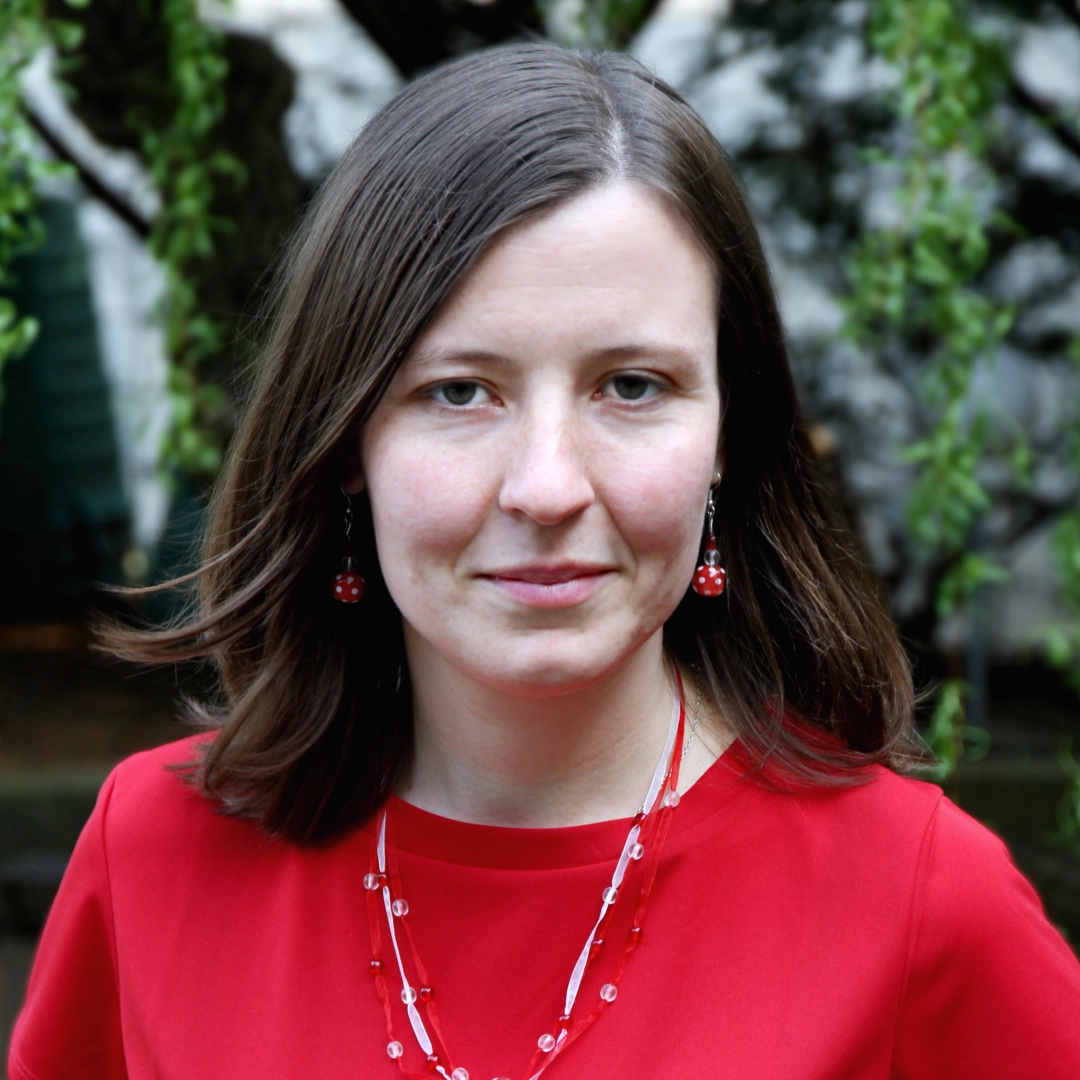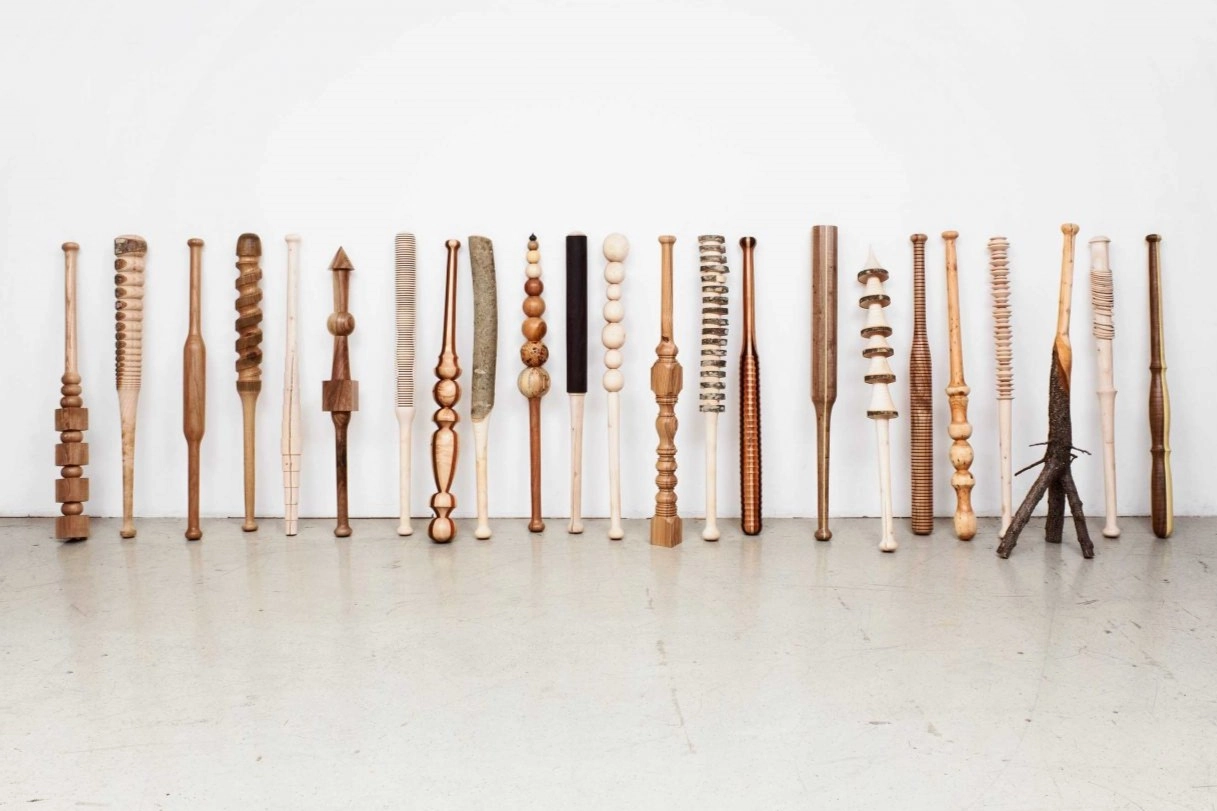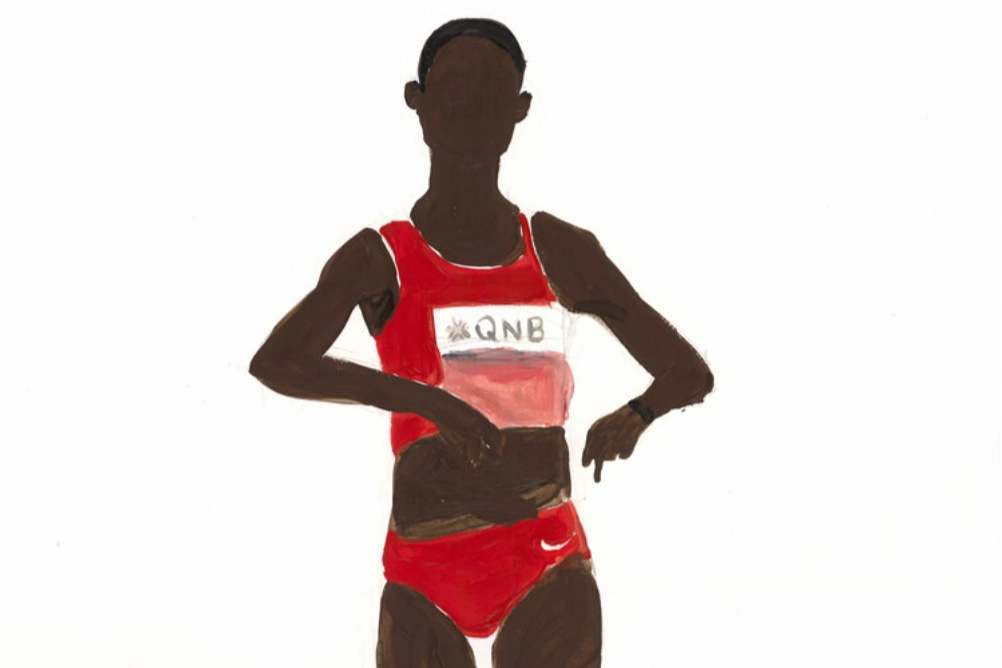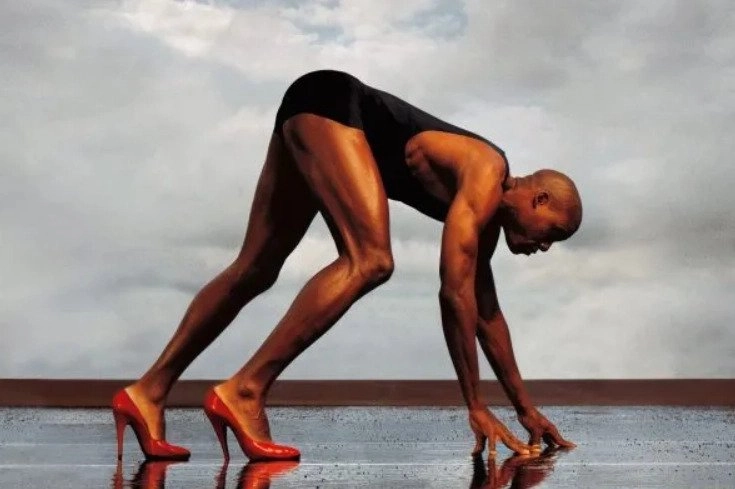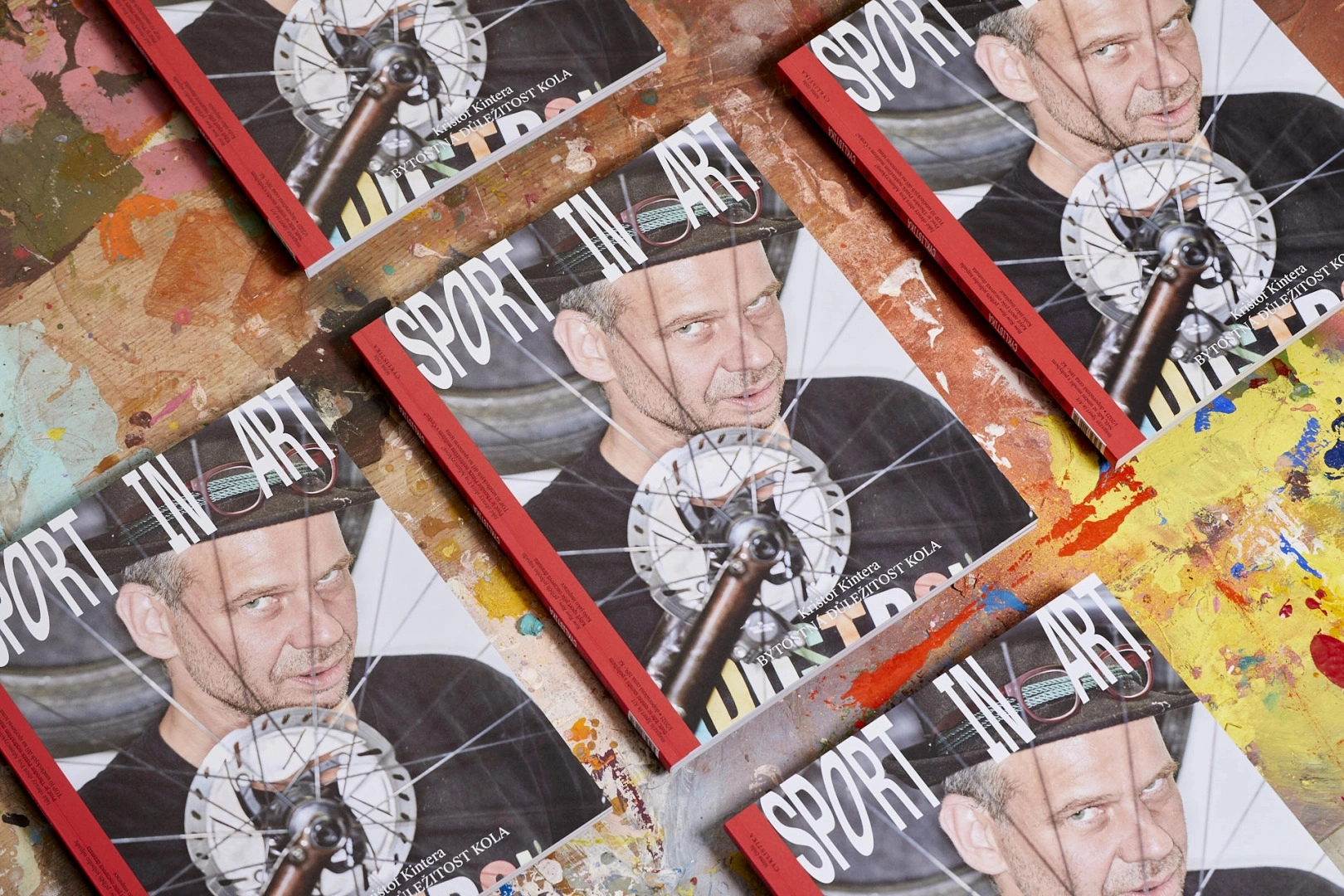With the approaching of this year's Velká Pardubická steeplechase run, we will look back at the depiction of horses and horse racing across history. This tradition is truly long and dates all the way back to prehistoric paintings and ancient sculptures; later the horse as a motif became very popular in the 19th century. Romantic painters and impressionists used to capture the impression of an ephemeral moment on the track, for futurists the running horses meant the opportunity to record rapid movement. Later, the major turning point came with the development of photography. Did you know that a horse never lifts all its legs from the ground? This was proved already in 1878 thanks to an ingenious camera system place along the track by Eadward Muybridge . Until these days, the interest in depicting horses among painters, graphic artists and sculptors hasn't decreased, so you can visit the racecourses not only in Pardubice or Chuchle, but also in many galleries in the Czech Repulis and around the world.
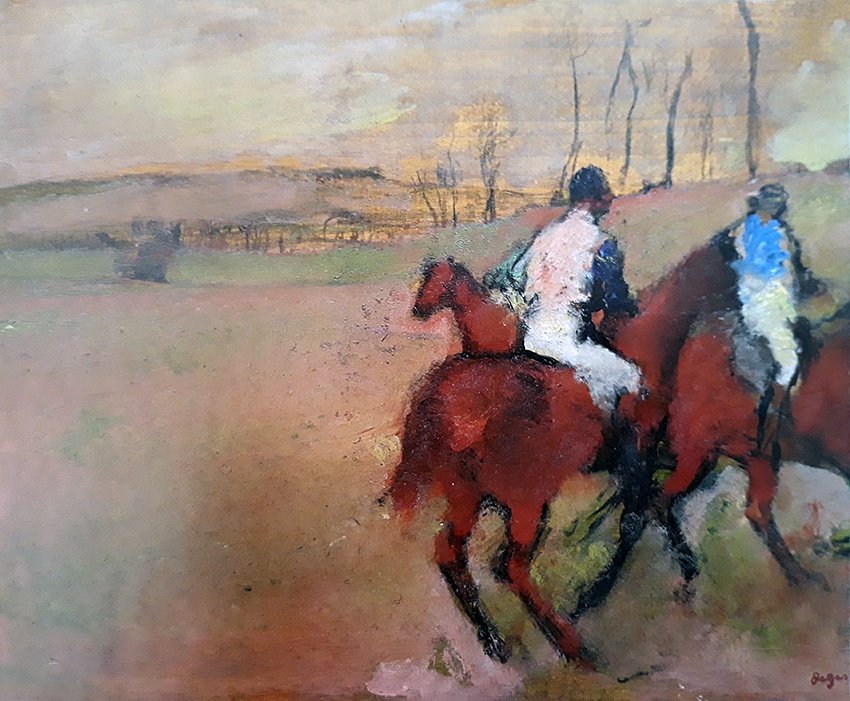
Horses have been the muse for fine artists since prehistoric wall paintings and was also common in the Ancient times. Already then, the artists were fascinated by the harmony of the animal and man, which is captured, for example, in the bronze statue of a charioteer from the 5th century BC found in Delphi. The horse also appears in many Renaissance and Baroque art pieces, whether in battle scenes or equestrian statues, where it stood for the symbol of power.
Impressionists fathomed the atmosphere of racecourses
The fascination with the movement of the horse came only later, following the Industrial Revolution, when the horse was no longer a means of work and transport, and saddling the horse for racing became a widespread sport. In the 19th century, horse racing became a source of inspiration for Romanticists and Impressionists such as Théodore Géricault, Manet, Degas and Toulouse-Lautrec, along with George Stubbs, Alfred Munnings, Benjamin Marshall, James Ward, Henry Thomas Alken, James Pollard and John Frederick Herring.
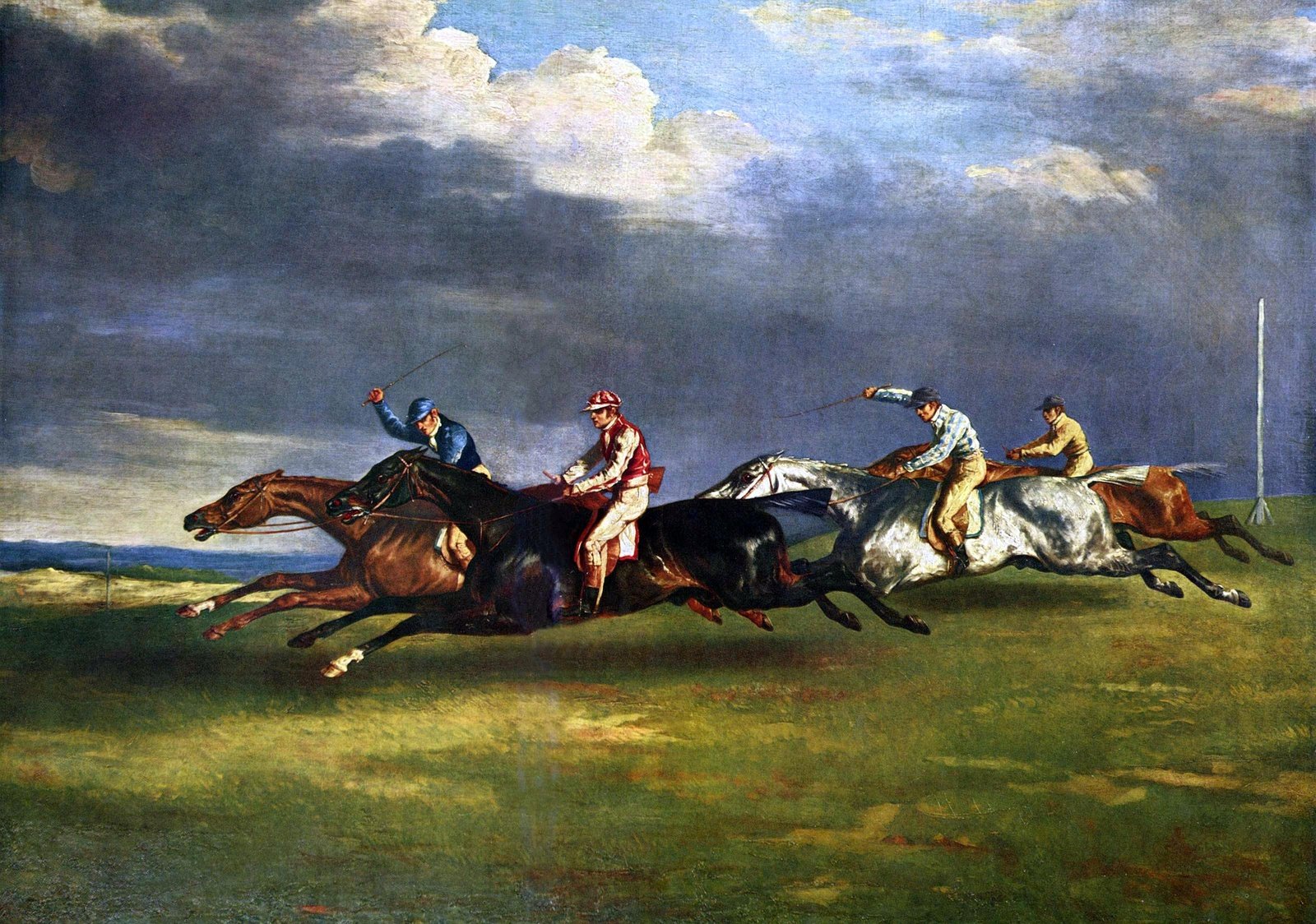
One of the first significant paintings which thematise horse racing is the painting The 1821 Derby at Epsom by Théodore Gericault from 1821. It depicts four riders with their horses captured mid-jump with their front and hind legs stretched out in the air. However, a horse can almost never get into such a position, when it's almost floating in the air, but this fact was discovered only later with the development of photographic technology. Gericault made this painting during his stay in England, where he also created many horse lithographs.
Influenced by photography and Japanese woodcuts, Edgar Degas also began to depict the settings around horse races and the elegance of these animals. He first focused on the colorfulness and atmosphere of the races, but over time he shifted his interest to the movement of horses and their anatomy.

The depiction of movement and the transient moment were the qualities of the horse world which fascinated also the founder of Impressionism, Édouard Manet. An example of such an approach is his painting The Races at Longchamp from 1865. Over time, the artist has abandoned the realistic portrayal of animals and people, but added more and more bold lines and chaos emphasizing the rapid movement of a horse in a race.
The Impressionists were followed up by the French painter Henri Toulouse-Lautrec, whose style was approaching Art Nouveau with his themes drawing from the Paris nightlife, or actually from horse racing. Artists' father used to taked him to the racecourse as a child, but it was his teacher René Princeteau, who painted mainly animals and riders in dynamic motion, who introduced him to the horse as a motif.
Photography was able to freeze even a horse run
The use of photography meant a major turning point in the depiction of moving horses – it brought the possibility to capture horses in rapid movement by a camera. This was first accomplished in 1878 by Eadweard Muybridge, who shot a photographic series titled The Horse in Motion. He became more interested in movement in 1873, when a wealthy horse breeder Leland Stanford bet $25,000 on that at a certain stage of the canter, neither of the horse's four legs touch the ground. That was exactly what Muybridge proved with a series of images on wet collodion plates created using 24 photographic devices. He places them at regular distance around the track across which he streched strings attached to the cameras, so that the horse would break them while running and thus release their spring shutters.
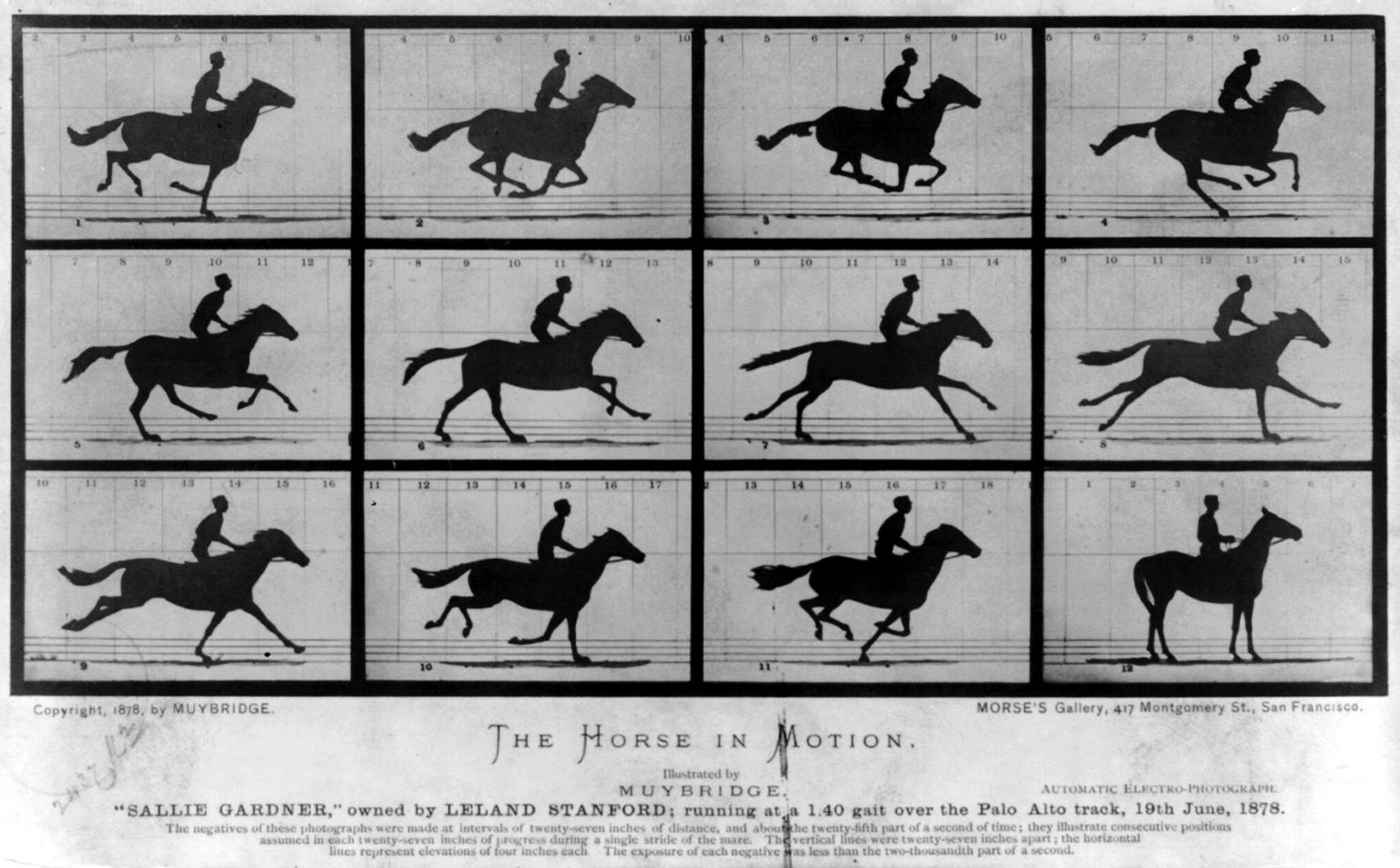
Motion, speed and dynamics were topical for art movement Futurism, which was fascinated by the technological opportunities and modern life. The movement of the horse was a good opportunity to depict the dynamics of a scene, in which the futurists didn't see the running horse having only four legs, but rather a huge number of overlapping limbs as they flicker over the passing of time. An art piece where one can clearly recognize all the simultaneous phases of motion is the Red Horseman by Carlo Carrá.

The horse was also a pivotal theme for the German painter Franz Marc. This expressionist and co-founder of the art group Der Blaue Reiter, however, wasn't trying to depict movement, but rather to capture of the feelings and inner world of the animals. To achieve this, he was using bright colors and simplified shapes expressing the emotions and harmony of nature. He also employed color symbolism – his blue horses, closely linked to the name of the group meaning "Blue Rider", are supposed to symbolize truth, wisdom and contemplation.
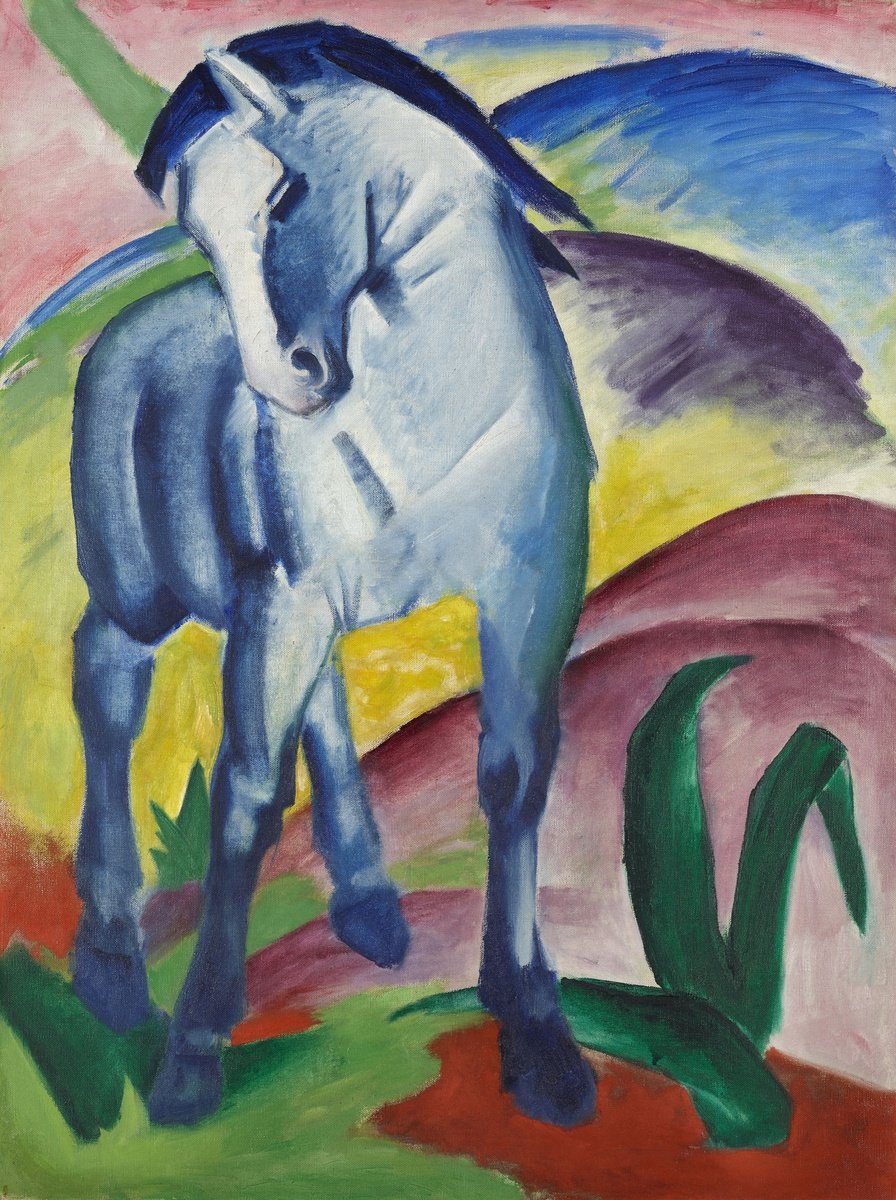
Sculptures and glass portraits of horses in the Czech context
Horses were also portrayed by Czech artists, among whom Emil Kotrba was the one to focus on this motif the most. The painter and graphic artist, predominantly active in the 1960s and 70s, was himself an active rider, trainer, and judge of equestrian competitions. The horse was thus his main motif, thanks to which an extensive collection of hundreds of prints, drawings and paintings saw the light of day. On top of that, he also went in for illustrations and created racing posters. In 1956, he even contributed to the design of three postage stamps inspired by the Velká Pardubická steeplechase run.
.jpg)
In the work of the sculptor Michal Gabriel, too, the horse has secured its place. The artist himself is affiliated with these animals and in 1980 he was even involved in helping to save the Hutsul horse stud on Janova hora in the Krkonoše Mountains. You could see Gabriel's bronze horses in the public space, such as at the intersection of Kafkova and Wuchterlova streets in Prague 6 in Dejvice, where they are a part of the design of a small square with a water cascade.
The atmosphere of the racecourse was excellently captured in 2002 by Michal Pěchouček in his series ...short sport spots. In eight frames, he depicts the story of a jockey from his collision during a race and subsequent fall to reconciliation with his opponent.

On the other side stands the author of perforated prints Alena Kučerová, whose main focus falls on the relationship of a man and a horse. She portrays the landscape of the Polabí region in Central Bohemia as seen from the saddle of her horse. She uses her own graphic technique, in which she first combined separate perforated points with dry needles, later switched to perforated lines and outlines or to a geometric grid. Alongside the resulting prints, she also exhibits the metal plate dies.
A portrait sculpture of the horse was created by the glassmaker Václav Machač, who was known for his realistically grasped glass portraits of boxers, cyclists, jockeys, wrestlers and car racers. Machač worked with the horse theme in his expressive drawings, too.
Horses keep fascinating contemporary artists
The motif of the horse is apparent even in the work of contemporary world artists. Australian Jo Felber captures moments from the horse races by his own combined method based on a photograph, which he breaks into individual parts and combines them with painting techniques. This gives rise to pieces combining the immobility of the moment from the photograph and the dynamics connection between individual fragments.
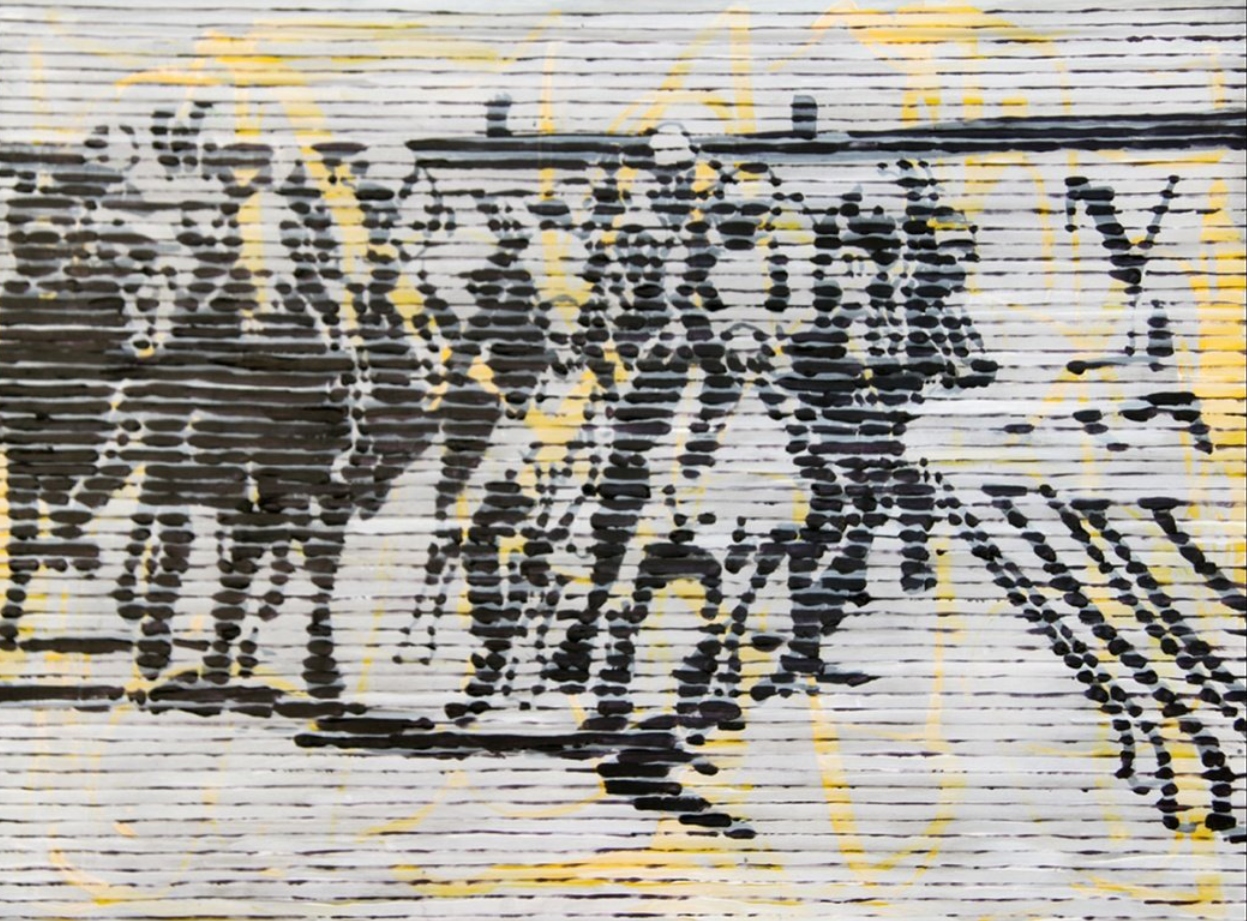
The theme of horses and racing can be found in the work by Taiwanese artist Shih Yung Chun, whose paintings and 3D art combine inspirations and objects of everyday life with surreal scenes – such is his horse racing piece Merry Horse Racing Combo from 2015.
Among other worth mentioning is also the Russian-based artist Evgeniya Buravleva, who in her piece Horse Race works with classical painting techniques. The racing environment recently inspired the American David Shevlino, who still in the 21st century remains faithful to classic oil painting. The theme of horses has also spread into the work of Graham Gillmore, whose concept is anything but classical and whose paintings are based on text and link the visual and linguistic meaning. The portrayal of horses and the race theme then pervade many different artistic styles.
.jpg)
